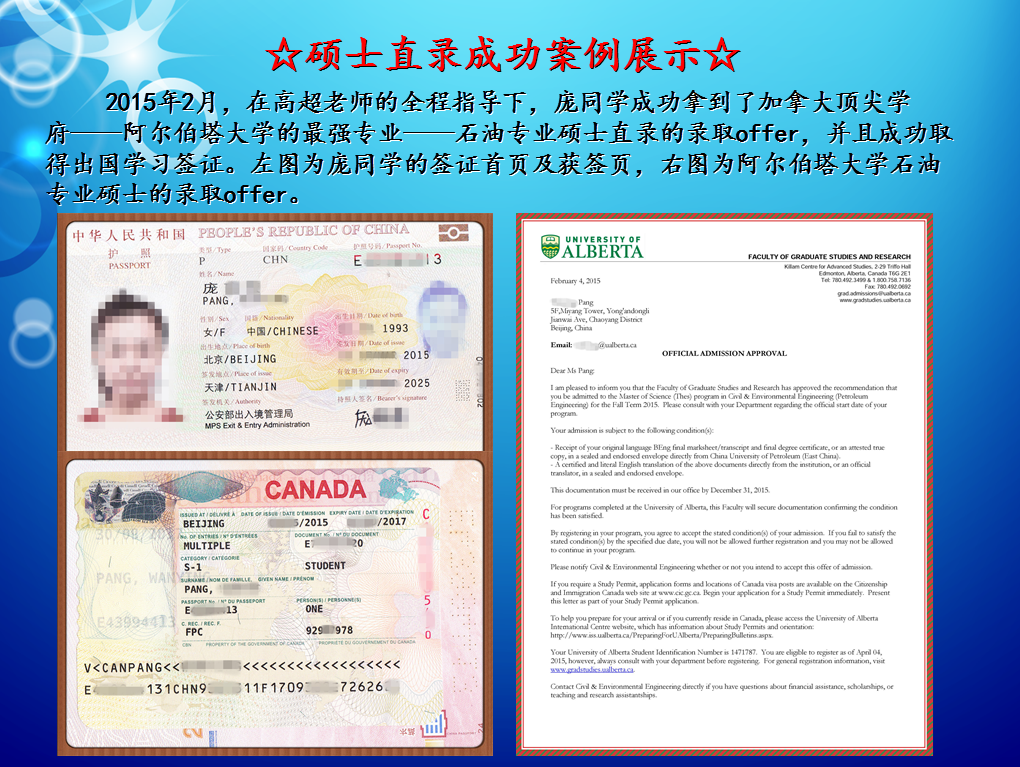雅思阅读真题文章之土星.
2017-08-07 414阅读
编辑推荐:
雅思阅读材料之Mars
雅思阅读文章之Nike Jordan
雅思阅读文章之加勒比海的绿宝石
下面是一篇关于土星的雅思阅读真题文章,这篇雅思阅读文章的主要内容是介绍了关于土星的各个方面,包括了自转和公转,大气和地表,温度,密度,卫星,还有壮观的环以及人类的探索等等。下面是详细内容。
Saturn
Saturn is the second largest planet. Only Jupiter is larger. Saturn has seven thin, flat rings around it. The rings consist of numerous narrow ringlets, which are made up of ice particles that travel around the planet. The gleaming rings make Saturn one of the most beautiful objects in the solar system. Jupiter, Neptune, and Uranus are the only other planets known to have rings. Their rings are much fainter than those around Saturn.
Saturn&aposs diameter at its equator is about 74,900 miles (120,540 kilometers), almost 10 times that of Earth. The planet can be seen from Earth with the unaided eye, but its rings cannot. Saturn was the farthest planet from Earth that the ancient astronomers knew about. They named it for the Roman god of agriculture.
Saturn travels around the sun in an elliptical (oval-shaped) orbit. Its distance from the sun varies from about 941,070,000 miles (1,514,500,000 kilometers) at its farthest point to about 840,440,000 miles (1,352,550,000 kilometers) at its closest point. The planet takes about 10,759 Earth days, or about 29 1/2 Earth years, to go around the sun, compared with 365 days, or one year, for Earth.
Rotation
As Saturn travels around the sun, it spins on its axis, an imaginary line drawn through its center. Saturn&aposs axis is not perpendicular (at an angle of 90 degrees) to the planet&aposs path around the sun. The axis tilts at an angle of about 27 degrees from the perpendicular position.
Saturn rotates faster than any other planet except Jupiter. Saturn spins around once in only 10 hours 39 minutes, compared to about 24 hours, or one day, for Earth. The rapid rotation of Saturn causes the planet to bulge at its equator and flatten at its poles. The planet&aposs diameter is 8,000 miles (13,000 kilometers) larger at the equator than between the poles.
Surface and atmosphere
�
Most scientists believe Saturn is a giant ball of gas that has no solid surface. However, the planet seems to have a hot solid inner core of iron and rocky material. Around this dense central part is an outer core that probably consists of ammonia, methane, and water. A layer of highly compressed, liquid metallic hydrogen surrounds the outer core. Above this layer lies a region composed of hydrogen and helium in a viscous (syruplike) form. The hydrogen and helium become gaseous near the planet&aposs surface and merge with its atmosphere, which consists chily of the same two elements.
A dense layer of clouds covers Saturn. Photographs of the planet show a series of belts and zones of varied colors on the cloud tops. This banded appearance seems to be caused by differences in the temperature and altitude of atmospheric gas masses.
The plants and animals that live on Earth could not live on Saturn. Scientists doubt that any form of life exists on the planet.
Temperature
The tilt of Saturn&aposs axis causes the sun to heat the planet&aposs northern and southern halves unequally, resulting in seasons and temperature changes. Each season lasts about 7 1/2 Earth years, because Saturn takes about 29 times as long to go around the sun as Earth does. Saturn&aposs temperature is always much colder than Earth&aposs, because Saturn is so far from the sun. The temperature at the top of Saturn&aposs clouds averages -285 degrees F (-175 degrees C).
The temperatures below Saturn&aposs clouds are much higher than those at the top of the clouds. The planet gives off about 2 1/2 times as much heat as it receives from the sun. Many astronomers believe that much of Saturn&aposs internal heat comes from energy generated by the sinking of helium slowly through the liquid hydrogen in the planet&aposs interior.
Density and mass
Saturn has a lower density than any other planet. It is only about one-tenth as dense as Earth, and about two-thirds as dense as water. That is, a portion of Saturn would weigh much less than an equal portion of Earth, and would float in water.
Although Saturn has a low density, it has a greater mass than any other planet except Jupiter. Saturn is about 95 times as massive as Earth. The force of gravity is a little higher on Saturn than on Earth. A 100-pound object on Earth would weigh about 107 pounds on Saturn.
Rings
The rings of Saturn surround the planet at its equator. They do not touch Saturn. As Saturn orbits the sun, the rings always tilt at the same angle as the equator.
The seven rings of Saturn consist of thousands of narrow ringlets. The ringlets are made up of billions of pieces of ice. These pieces range from ice particles that are the size of dust to chunks of ice that measure more than 10 feet (3 meters) in diameter.
Saturn&aposs major rings are extremely wide. The outermost ring, for example, may measure as much as 180,000 miles (300,000 kilometers) across. However, the rings of Saturn are so thin that they cannot be seen when they are in direct line with Earth. They vary in thickness from about 660 to 9,800 feet (200 to 3,000 meters). A space separates the rings from one another. Each of these gaps is about 2,000 miles (3,200 kilometers) or more in width. However, some of the gaps between the major rings contain ringlets.
Saturn&aposs rings were discovered in the early 1600&aposs by the Italian astronomer Galileo. Galileo could not see the rings clearly with his small telescope, and thought they were large satellites. In 1656, after using a more powerful telescope, Christiaan Huygens, a Dutch astronomer, described a "thin, flat" ring around Saturn. Huygens thought the ring was a solid sheet of some material. In 1675, Giovanni Domenico Cassini, an Italian-born French astronomer, announced the discovery of two separate rings made up of swarms of satellites. Later observations of Saturn resulted in the discovery of more rings. The ringlets were discovered in 1980.
Satellites
In addition to its rings, Saturn has 25 satellites that measure at least 6 miles (10 kilometers) in diameter, and several smaller satellites. The largest of Saturn&aposs satellites, Titan, has a diameter of about 3,200 miles (5,150 kilometers) -- larger than the planets Mercury and Pluto. Titan is one of the few satellites in the solar system known to have an atmosphere. Its atmosphere consists largely of nitrogen.
Many of Saturn&aposs satellites have large craters. For example, Mimas has a crater that covers about one-third the diameter of the satellite. Another satellite, Iapetus, has a bright side and a dark side. The bright side of this satellite rlects about 10 times as much sunlight as the dark side. The satellite Hyperion is shaped somewhat like a squat cylinder rather than like a sphere. Unlike Saturn&aposs other satellites, Hyperion&aposs axis does not point toward the planet.
Flights to Saturn
In 1973, the United States launched a space probe to study both Saturn and Jupiter. This craft, called Pioneer-Saturn, sped by Jupiter in 1974 and flew within 13,000 miles (20,900 kilometers) of Saturn on Sept. 1, 1979. The probe sent back scientific data and close-up photographs of Saturn. The data and photographs led to the discovery of two of the planet&aposs outer rings.
Pioneer-Saturn also found that the planet has a magnetic field, which is 1,000 times as strong as that of Earth. This field produces a large magnetosphere (zone of strong magnetic forces) around Saturn. In addition, data from the probe indicated the presence of radiation belts inside the planet&aposs magnetosphere. The belts consist of high-energy electrons and protons, and are comparable to Earth&aposs Van Allen belts.
In 1977, the United States launched two space probes -- Voyager 1 and Voyager 2 -- to study Saturn and other planets. Voyager 1 flew within 78,000 miles (126,000 kilometers) of Saturn on Nov. 12, 1980. On Aug. 25, 1981, Voyager 2 flew within 63,000 miles (101,000 kilometers) of the planet.
The Voyager probes confirmed the existence of Saturn&aposs seventh ring. They also found that the planet&aposs rings are made up of ringlets. In addition, the probes sent back data and photographs that led to the discovery or confirmation of the existence of nine satellites. The Voyager probes also determined that the atmosphere of Titan consists chily of nitrogen. In 1997, the United States launched the Cassini probe to study Saturn, its rings, and its satellites. The probe began orbiting Saturn in 2004. Cassini also carried a probe called Huygens, which was to separate from Cassini and land on Titan. Huygens was built by the European Space Agency, an organization of European nations.
Contributor: Hyron Spinrad, Ph.D., Professor of Astronomy, University of California, Berkeley.
留学咨询
更多出国留学最新动态,敬请关注澳际教育手机端网站,并可拨打咨询热线:400-601-0022
留学热搜
相关推荐
- 专家推荐
- 成功案例
- 博文推荐

Copyright 2000 - 2020 北京澳际教育咨询有限公司
www.aoji.cn All Rights Reserved | 京ICP证050284号
总部地址:北京市东城区 灯市口大街33号 国中商业大厦2-3层









高国强 向我咨询
行业年龄 12年
成功案例 3204人
留学关乎到一个家庭的期望以及一个学生的未来,作为一名留学规划导师,我一直坚信最基本且最重要的品质是认真负责的态度。基于对学生和家长认真负责的原则,结合丰富的申请经验,更有效地帮助学生清晰未来发展方向,顺利进入理想院校。
Tara 向我咨询
行业年龄 7年
成功案例 1869人
薛占秋 向我咨询
行业年龄 11年
成功案例 1869人
从业3年来成功协助数百同学拿到英、美、加、澳等各国学习签证,递签成功率90%以上,大大超过同业平均水平。
Cindy 向我咨询
行业年龄 19年
成功案例 5073人
精通各类升学,转学,墨尔本的公立私立初高中,小学,高中升大学的申请流程及入学要求。本科升学研究生,转如入其他学校等服务。